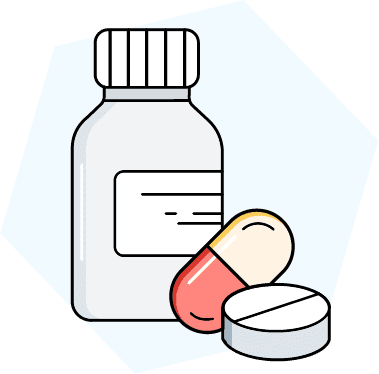How Does Inflation Affect Healthcare Costs?
In mid-2022, national inflation reached its highest in four decades. While medical inflation typically outpaces the rest of the economy, the current US inflation rate of 3.7% for all other goods and services has significantly overshot a 0.1% increase in general medical expenses.
However, according to the KFF, specific healthcare services rose significantly faster than others. Outpatient and hospital expenses swelled at respective rates of 5.7% and 4.2%, prescription costs rose by 3.1%, and primary doctors’ care increased by 0.5%. Meanwhile, the ACA’s maximum out-of-pocket limit and the monthly cost of insurance premiums have continued growing faster than average American wages.
Table of Contents
Our Top Strategies For Keeping Healthcare Costs Stable
To stay ahead of inflation, health insurance customers can annually review their policies, opt for higher deductibles, or employ numerous other cost-reductive strategies.

1. Annual Policy Reviews
Most people with ACA-compliant health insurance can only update their coverage during the annual Open Enrollment Period between November 1st and December 15th. While some people qualify for Special Enrollment periods due to divorce, termination, or other significant circumstances, most others who miss the general window must wait another 12 months to make policy changes.
By annually reviewing your policy, you can opt out of specific benefits, change your deductible, switch plan types, or move to a more affordable insurer. For example, some people who no longer require out-of-network doctor’s services can secure cheaper premiums by purchasing a more restrictive HMO policy. Others might find they rarely use their prescription benefits and other supplementary coverages or can buy them cheaper through another insurer.
2. Catastrophic Health Insurance
Catastrophic health insurance plans charge low monthly premiums in exchange for significantly inflated deductibles. While these policies may not suit individuals who need frequent medical attention, they offer affordable protection against worst-case scenarios like severe illness or injury. Notably, only people under 30 or older individuals with hardship exemptions can purchase catastrophic coverage.
Once you exceed your deductible, catastrophic plans pay for all covered services without imposing copayments or coinsurance. Likewise, these policies cover all the same essential health benefits as all other Marketplace plans, including free preventative care. However, catastrophic policyholders are not eligible for premium tax credits.
3. Group/Employer Insurance
The ACA requires all large employers to offer group health insurance to every full-time employee. Though not mandated by law, smaller companies providing similar benefits can secure premium tax credits to minimize expenses. In group coverage, employers typically split insurance costs and do all the work of policy selection and management. On average, private businesses pay 67% of their employees’ monthly premiums.
The federal government does not tax these employer contributions and allows workers to distribute their payments as pretax payroll deductions, ultimately lowering their taxable income. Notably, group health insurance premiums can cost as little as 25% of those imposed by benchmark a Marketplace plan before subsidies.
4. Generic Drugs
Once the patent expires on a name-brand medication, other companies can begin manufacturing copycat products. The FDA requires these generic alternatives to exhibit a near-identical composition of active ingredients, come in similar strengths and dosages, and pass overall quality, stability, and safety protocols. Generic drugs that overcome these stringent criteria typically cost 80-85% less than their brand-name counterparts.

Name-brand medications generally cost more due to the expensive nature of initial product development and marketing. While not all pharmaceuticals have generic alternatives, most familiar products do. If your doctor allows it, you can always request a pharmacist to substitute a name-brand drug with its generic alternative to help minimize your healthcare expenses.
5. Opt For a Higher Deductible
Higher insurance deductibles almost always result in lower premiums. For example, while Gold and Platinum Marketplace policies cost more every month, members usually have a relatively low deductible. On the other hand, Bronze, and Silver plans charge lower premiums but impose higher deductibles before covering eligible medical services.
Some people with specialized High-Deductible Health Plans (HDHPs) can enroll in and contribute tax-free dollars to Health Savings Accounts (HSAs). While HDHPs require higher deductibles than conventionally tiered Marketplace coverage, affiliated HSA funds roll over yearly, helping members pay for deductibles, copayments, coinsurance, and other eligible healthcare expenses like medical transportation and prescription drugs on a tax-advantaged basis.
All in All
Inflation rates for consumer goods and services have recently outpaced the general cost of healthcare. Whether or not these recent trends continue, specific medical expenses have still risen substantially. To stay ahead of inflation, review your health insurance policy every year and make applicable changes during your Open Enrollment Period.
Securing catastrophic coverage, an HDHP with an HSA, generic medications, or employer-sponsored benefits can significantly reduce premiums and other out-of-pocket expenses like copays or coinsurance. Remember that even minimal coverage offers financial protection against unexpected or emergency medical situations. Cutting costs to sustain your policy always beats dropping health insurance altogether.
